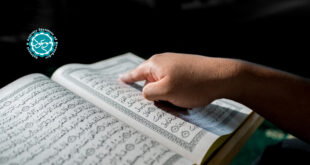Nauha and Marsiya
(A) The Prophet’s Sunnah is Practical
It is narrated from the Prophet’s companion, Ibn Masud that when the Messenger of Allah (s.a.w) arrived at the corpse of His Eminence, Hamzah and found it mutilated, he wept so bitterly as he had never done before and he recited the following elegy until he became unconscious:
“O Hamzah! O uncle of the Messenger of Allah (s.a.w)! O lion of Allah and His Prophet! O one who performed the good deeds. O Hamzah, O one who removed the sorrows, O Hamzah! O one who removed the enemies from the face of the Holy Prophet (s.a.w).”
Since the above incident is recorded in all histories, we feel it needless to provide specific reference for it.
(B) The Sunnah of the Imam is Practical
Dirges and elegies of Imam ‘Ali Ibn Husayn (a.s) are well-known. The following are some couplets that the Holy Imam (a.s) said repeatedly while weeping when he was entering Kufa in captivity:
O evil people, may rain not water your fertile lands.
O people who did not care about our relationship with our grandfather.
When the Prophet and we come together on the Day of Judgment, what would you say regarding us?
You make us travel on saddle-less camels as if we have not established any religion for you.
Was our grandfather the Messenger of Allah (s.a.w) not the one who guided the humanity away from deviation?
O the tragedy of Karbala’, that you gave us in inheritance! And may God destroy the honor of these people and expose their defects.
(C) It is the Sunnah of Ahl al-Bayt
Numerous elegies and dirges of Her Eminence, Zainab and Umme Kulthum are famous. Here we quote two couplets of each of the ladies. Lady Zainab recited the following in the bazaar of Kufa when a stone struck the severed head of the holy Imam (a.s):
O new moon! Your light has not been perfected yet.
That you have gone into eclipse and you set.
My dear brother, I have not imagined it. It was a matter destined.
Lady Umme Kulthum recited the following couplets upon their return to Medina:
O city of our grandfather, do not accept us.
We have come with pain, sorrow and grief.
O Fatima if you could see the prisoners
That your daughters are taken out through the towns.
(D) The Sunnah of the Imam is Verbal
Shaykh Mufeed has on the authority of Ibn Quluwahy quoted the following command of Imam Ja’far Sadiq (a.s) that:
(Shia Tradition): Every weeping and lamentation is detestable (Makruh) except the one on the tragedy of Husayn (a.s). (As it is rewardable).38
A similar tradition is present in Kamiluz Ziyaraat from another chain of narrators also.
Ma’tam and Mourning Procession
Ma’tam and Mourning Procession39
(A) Ma’tam
Before quoting traditions regarding Ma’tam, I feel it is necessary to mention an incident about Mutawakkil Billah the Ahl al-Sunnah caliph whose merits are such that many Ahl al-Sunnah people give him the grade of Righteous Caliph. He exhibited such zeal in the eradication of innovations that he tried his best to destroy all traces of the tomb of Imam Husayn (a.s). Such a prominent personality, ordered that Ma’tam be performed on the passing away of Imam Ahmad bin Hanbal.
“Mutawakkil ordered that Ma’tam should be held at the place where the funeral prayer was recited on the bier of Imam Ahmad bin Hanbal. Thus 2.5 million people gathered at that place and Muslims, Jews, Christians, Zoroastrians and people of four schools performed Ma’tam there.”
Obviously when the caliph who is called as the ‘reviver of the Sunnah’ organized such Ma’tam who had the guts to call it an act of innovation (Bid’ah)?
Apart from this let us now see some traditions that prove that Ma’tam is Sunnah and lawful.
(B) Ma’tam is Practical Sunnah of Imam
When the Ahl al-Bayt (a.s) were released from Syria and en route to Medina, they reached Karbala’ and found Jabir Ibn Abdullah Ansari and some other prominent companions of the Messenger of Allah (s.a.w) and some other people of Banu Hashim there, what occurred at that time is described by Sayyid Ibn Tawus in Lohoof:
Thus all of them reached there at one and the same time. They met and they wept. They slapped their faces and performed such Ma’tam as injures the hearts. The ladies of the surrounding areas also gathered and joined them in the mourning rituals and this continued for many days.
The above episode clearly shows that people of Ahl al-Bayt (a.s), Banu Hashim and prominent companions like Jabir Ibn Abdullah Ansari and even the ladies of the neighborhood all gathered at the place and took part in the Ma’tam. They slapped their faces and did Ma’tam. And these rituals continued for many days. During all this there is no report of any restraint commanded by Imam ‘Ali Ibn Husayn (a.s). Therefore we have to accept that he also participated in the expression of their grief and rituals of mourning. Therefore it is the practical Sunnah of the Imam.
(C) It is the Silent Permission of Imam
The terminological meaning of‘Taqreer’ is that if someone performs an act in the presence of the Imam and the Prophet and they, inspite of being capable, do not restrain him or her, it proves that, that act is lawful in Islamic law. If someone is not prepared to accept that the Ma’tam held in Karbala’ was the practical Sunnah of the Imam and says that there is no mention the Imam (a.s) himself participated in it, he or she would have to agree that those people did Ma’tam and slapped their faces for many days in the presence of the Imam (a.s) and while they were subservient to his command and the Imam did not restrain them. Does this not prove that Ma’tam, face slapping and wailing and mourning on Imam Husayn (a.s) is not only lawful, but also a practice of the Imam?
(D) If it is the Sunnah of Ahl al-Bayt (a.s)
That Ma’tam is the Sunnah of Ahl al-Bayt (a.s) has already been proved by the previous narration report in this regard:
(Shia Tradition): Imam Ja’far Sadiq (a.s) said: “After the martyrdom of Imam Husayn (a.s), Lady Rabab (wife of Imam Husayn) performed Ma’tam on him.”40
(Note: The account of the mourning and grief of Lady Rabab is present in all books of history and biography)
Act of the People of Medina
In the view of Ahl al-Sunnah Imam, Malik, the action of the people of Medina is proof and obligatory action. Let us now see the action of people of Medina regarding the mourning for Imam Husayn (a.s). When the caravan of Ahl al-Bayt (a.s) returned and halted on the outskirts of Medina, Bashir bin Juzlam conveyed the news of their arrival to the folks of Medina.41
“Thus no veiled lady remained in Medina who did not come out in such a condition that her hair was in disarray and she was slapping her face and thrashing her cheeks. They were weeping and wailing. Thus I had never seen such clamor ever before and such a crowd of mourners.”
It is obvious that after these explanations, no doubt remains for anyone in the recommended nature of the Ma’tam for Imam Husayn (a.s). Now let us see how the people of Medina reached the Holy Imam (a.s) in a magnificent procession:
Bashir says, “I was in Medina itself and the people of Medina reached Ahl al-Bayt (a.s) before me. Hence I turned my horse and reached there to find the whole area filled with multitudes of people. There was such a crowd that I had to alight from the horse and I walked over the necks of the people to reach Ahl al-Bayt (a.s).”42
From this took shape the present Ma’tam procession. But our Ma’tam procession is actually not in commemoration of this procession of Medinite folks. It is in remembrance of the plundered caravan of Ahl al-Bayt (a.s) that was taken from Karbala’ to Kufa, Kufa to Syria and from Syria to Medina. Which was taken through streets, lanes and by lanes. Just as the Ahl al-Bayt (a.s) used to weep and wail through the ways, we also emulate them and try to keep their memory fresh.
Check Also
15 European Countries With Most Muslims
According to Mouood, quoting by World Atlas: 15 European Countries With Most Muslims By 2050, Muslims …
 Mouood Mouood English Edition
Mouood Mouood English Edition



